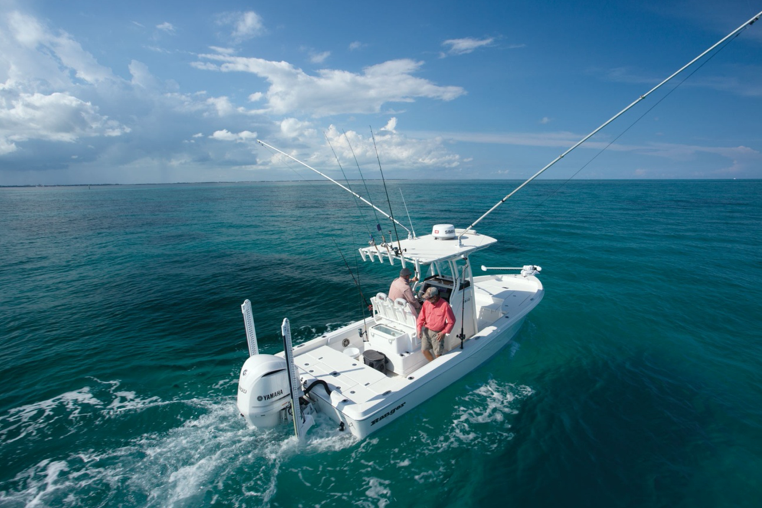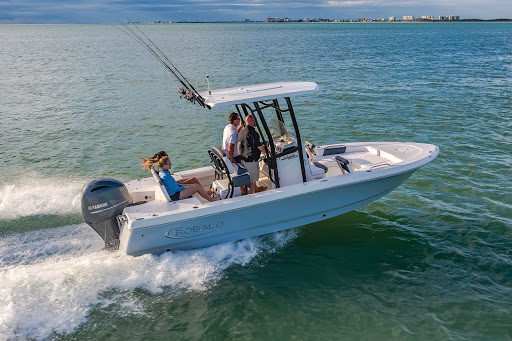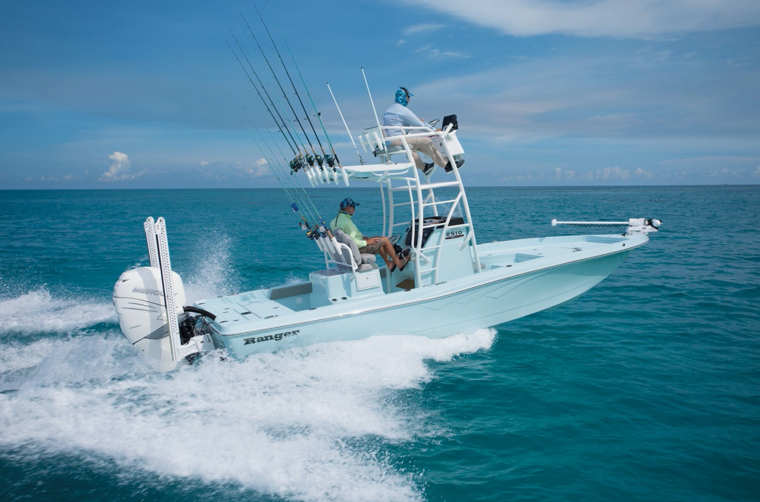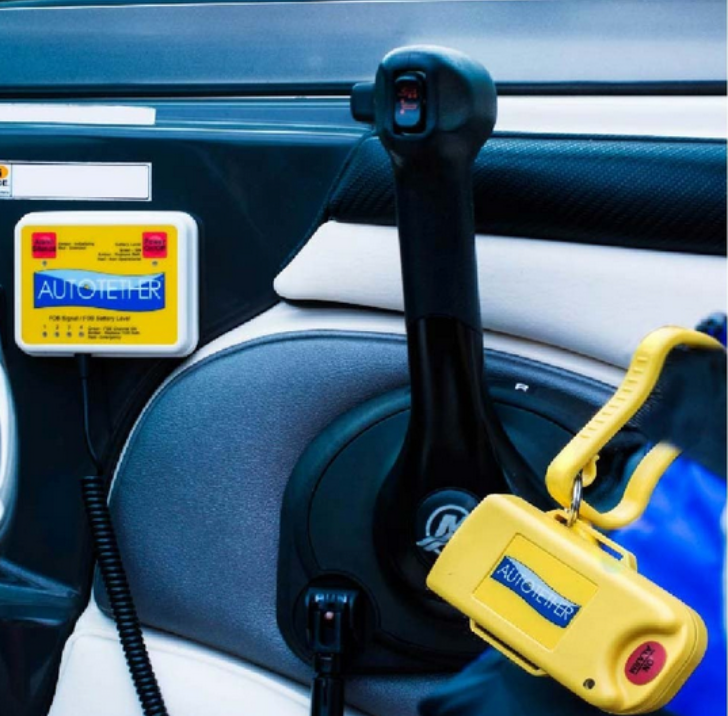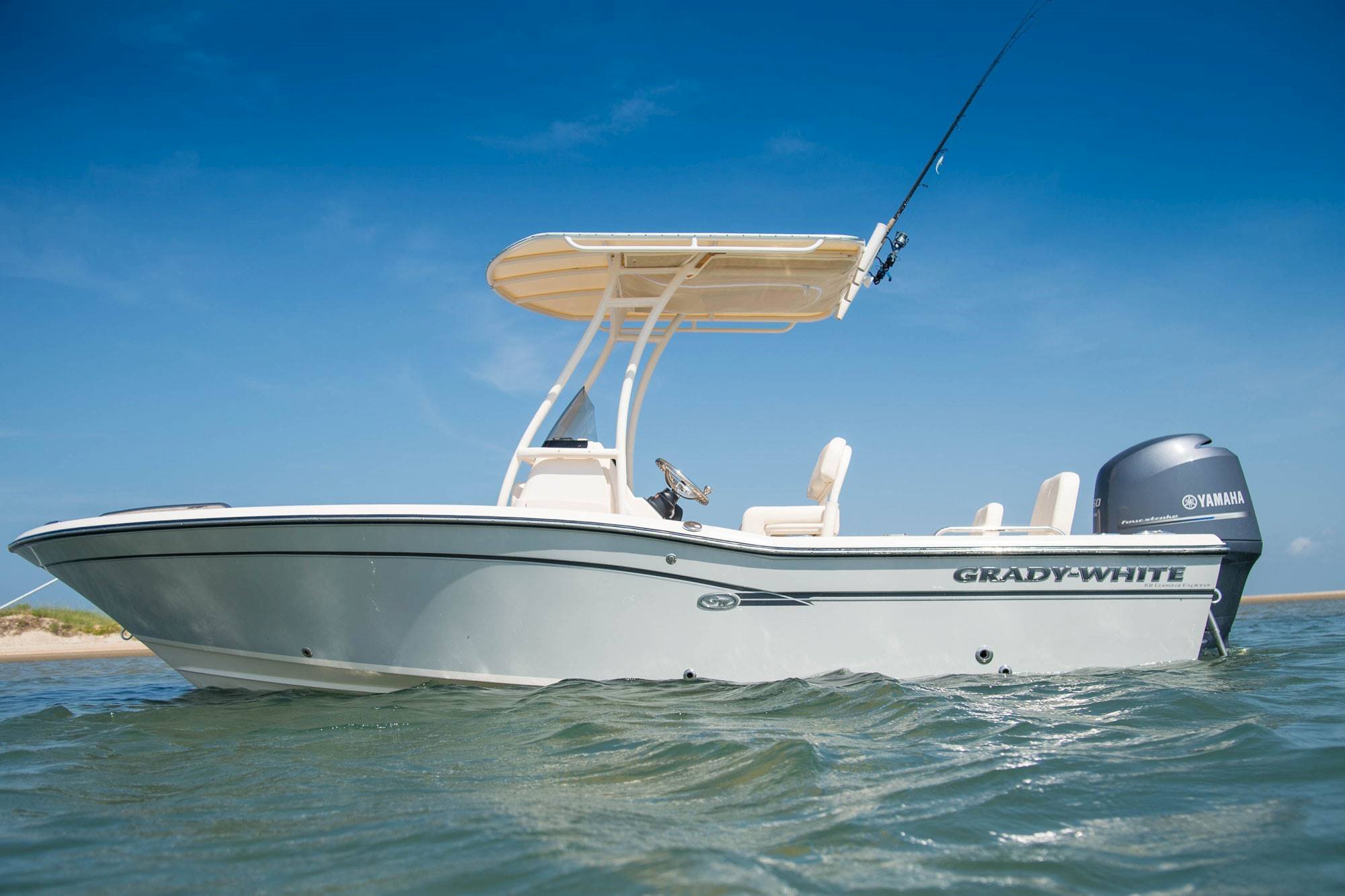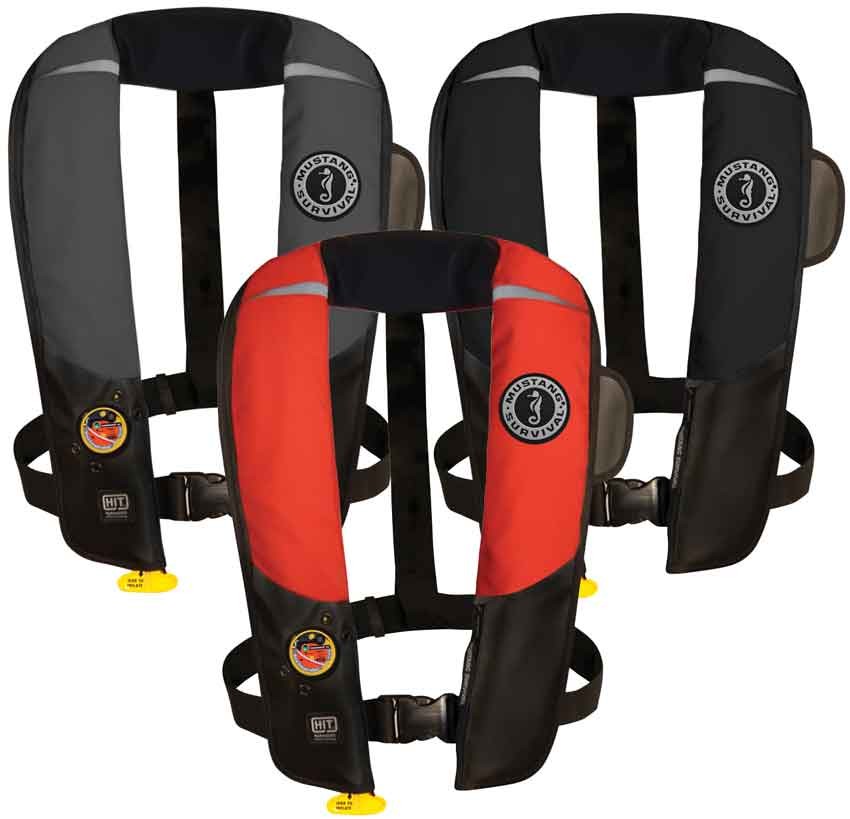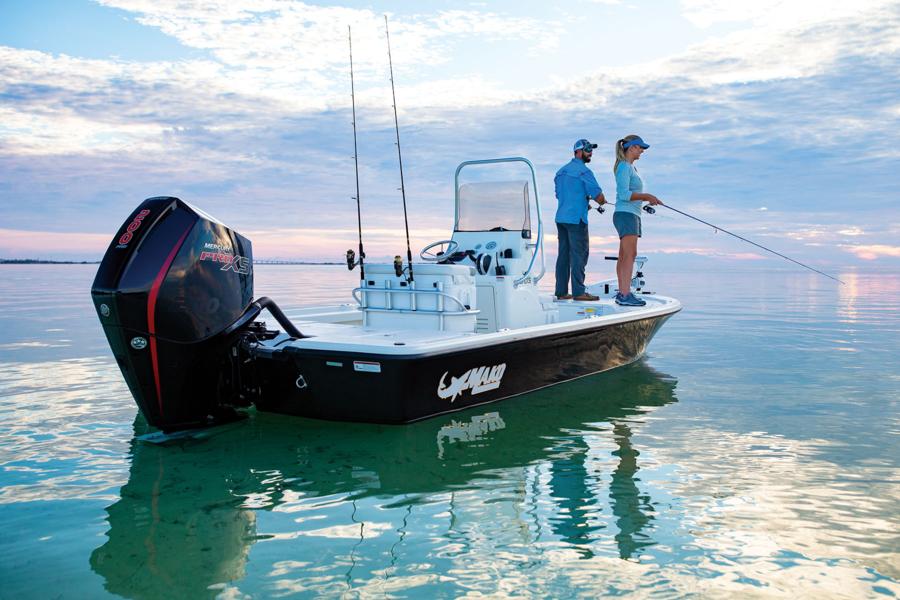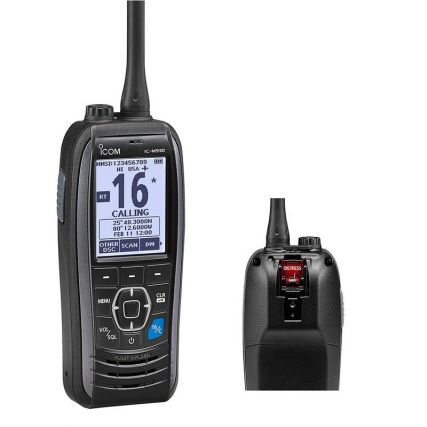Should Bay/Flats Boats Venture Offshore?
By Frank Sargeant
Back when the kingfish runs were the action out of ports in St. Petersburg and Clearwater, Fla., it was not uncommon to see mackerel-crazed anglers racing after smoker kings in 12’ (3.66 m) jon boats 3 or 4 miles off the beaches. By the grace of God, none of these guys ever wound up as shark bait, but it was a bit of a miracle that they didn’t.
However, there’s no reason that a seaworthy flats or bay boat can’t head offshore — when conditions are just right — for a crack at the kings, sails, dolphin, blackfins, or whatever is on an angler’s pelagic wish list short of landing Jaws—for that, he’s definitely going to “need a bigger boat.” Hundreds of flats and bay boats head offshore every weekend and return without incident—sometimes with fish so big that they almost put the gunwales awash.
If a fisherman has the right rig, sets it up properly, chooses your days very carefully, and keep a wary eye on the weather, there’s no reason he can’t occasionally slip out the inlet and enjoy the deep blue in a larger flats or bay rig in many areas. Not the mouth of the Columbia River, to be sure, but there are more sedate passageways to the sea. These little boats can do the job very effectively in calm weather; from deep-jigging for snapper to drifting some livies for sails to easing up on a pod of rolling tarpon with the troller. They put an angler in the big leagues without the expense of owning a big boat.
Challenging Inlets
The big issue in going outside in a flats or bay rig is often the inlet itself, both when heading out and when returning. Offshore waves except in the most severe conditions tend to be long and rolling, and a driver can roller-coaster up and down them with little danger until they get truly huge. But inlet waves are often near vertical as the seas rear up feeling the shallows under them. And this condition is multiplied if there's an outgoing tide facing an incoming wind, and sometimes vice versa. Conditions on many East Coast inlets are frequently challenging. On the Gulf Coast, it’s rare to have a tough passage, though it can definitely happen on a gusty summer squall as well as on the big fronts that pass through in winter.
If the inlet looks gnarly in the morning, by all means, that’s the time to stay inside and chase trout and redfish, or maybe stripers. But on those mirror-calm mornings when sharp eyes can see tarpon rolling a hundred yards off the beach and kings skyrocketing right behind them, and the forecast promises more of the same all day long, there’s no reason not to buzz on out the cut and have a go at them.
Know Thy Boat
There are flats boats and then there are flats boats, of course. Some experts who will take a fly-weight 16’ (4.88 m) backcountry boat out St. Lucie Inlet and use it as a platform to fish the wash for snook, but they are long-experienced, and if things go truly wrong, all they have to do is hop out of the boat and walk up on the beach. But going farther off requires more boat than an ultra-light, for the matter of getting back through the inlet if nothing else.
Larger flats boats, 18’ (5.49 m) and up, as well as bay boats, typically with more freeboard and lengths of 20’ (6.1 m) to 25’ (7.62 m), can head offshore safely on many days. They should be self-bailing designs, of course, with large scuppers. The motor should be tuned and running flawlessly.
And, with flats boats, keep in mind there is always the risk of falling overboard in rolly water due to the low inwales. It’s smart to wear an inflatable PFD like the Sospender anytime outside the inlet. And particularly if an angler heads out alone, make sure the kill switch is attached every time the outboard is started. (An interesting new device, the Autotether, is a remote kill switch that requires no lanyard. A transponder is worn on a shirt or wrist strap. If it gets submerged, it shuts down the outboard—neat idea. It’s about $250.
RUNNING AN INLET
First, select an inlet; In Florida, some are known for being nasty, like St. Lucie, and others are pretty benign, like Canaveral. But if those who head outside frequently will probably going to have to deal with some snotty water. Get ready.
First, prepare the crew and the boat. Everybody puts on PFD’s and sits in a secure spot or stands holding a firm rail. The bilge is pumped clear, and all hatches are dogged down tight. If the baitwell is loaded, pump it out now rather than back at the dock. All loose tackle, ropes and anchor should be stowed securely.
The trick of inlet running in low-freeboard boats is to stay on the back of the waves and ride them through; if you get on the face, you may start to surf, and in this case hanging ten is not going to be a happy occasion. Control the speed so that boat is riding with the bow tilted up the wave—go faster or slower to maintain the position on the wave, making sure that the boat doesn’t speed up and go over the crest or slow down and drop back into the trough—where the following wave may roll over that low transom.
The trim of your motor should be adjusted so that it’s flush with the bottom, that is, to 0 degrees if you have a meter. Don’t trim up the motor because it pushes down the stern at low speed. Come through the inlet at somewhere between 2500 and 3000 rpm with a two-stroke, 3000 to 4000 rpm with a four-stroke. Try to keep the nose from dipping because it can cause dangerous bow-steering in a following sea.
It is possible, in extreme conditions (when you should not have been out there, in the first place) to ride the wake of a big yacht through an inlet. The trick is to get on the back of the second wave behind the boat and follow him through, taking care not to go over the lip. Be alert to the fact that he’s likely to pull back on the throttles as soon as he clears the rough stuff—do the same to stay out of his cockpit.
The other alternative, and don’t ignore this one, is simply to wait outside the inlet until that outgoing tide weakens. The water will flatten out to an amazing degree, and make it easier to ride in with far less concern.
GEARING UP FOR OFFSHORE
Hope for the best, but plan for the worst—never were truer words spoken when it comes to gearing up for a trip offshore. The odds are you’ll go out for a few hours, catch your fish and come back safe, no problems. But there’s always the possibility of real trouble when you’re in blue water in a small boat. Here’s a checklist of some of the stuff that should be aboard, just in case:
- Communications; a satellite phone is the best way to go, but a waterproof 25-watt VHF with a tall antenna and the Digital Selective Calling emergency function is also a good bet. Be sure to register the DSC so that rescue services can identify you if you have to use it. A cell phone can help if you’re not too far out. Carry it in a waterproof box—they don’t like salt spray.
- Emergency water and food; take a three day supply of each, minimum, for each person aboard. Beer does not count as water, or as food.
- Extra fuel. Plan on 1/3 of a tank going out, 1/3 coming back, 1/3 in reserve—a captain will need it if he has to plow through rough seas for miles to get back to the inlet.
- A fully-functional GPS –likely already on board. After drifting in the Gulf Stream a few hours, it’s amazing to learn the distance covered. The GPS can be used to chart a direct, fuel-saving route to the inlet.
- Basic first-aid supplies and medicines. Have a backup supply of any medications any crewmember needs to survive.
- Updated flares and high-quality, offshore PFD’s. An inflatable model isn’t designed to hold up a person in the water for days.
- Float plan. This stays ashore with a trusted person who is contacted upon return. It basically tells the destination and projected return, the crew and what the boat looks like.
- Backup battery. Running down the starter battery leaves people stranded offshore more than any other failure. Take along a backup and don’t draw it down by running the baitwell, the troller or the stereo system on its current.
- EPIRB—the Emergency Position Indicating Radio Beacon may seem like overkill just off the beach, but it becomes invaluable if the boat sinks offshore. It sends an emergency alert to satellites and includes a GPS signal so that rescue agencies can locate it within 100 meters. Prices have come down recently—one suitable for small boats starts around $600. Personal Beacons like the ACR ResQLink could be an affordable alternative.
- Weather Check: Before heading to the ramp, take a quick look at an Internet weather site like theweatherchannel.com. The radar views are always most helpful, but so is the wind forecast. A weather check every hour or two is a good idea.
